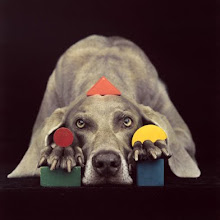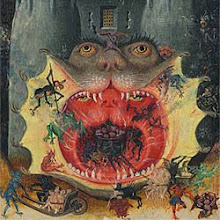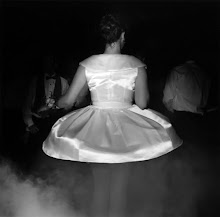An artist whose name has been lost to time painted the gold-studded illuminations around 1440 in a book of prayers for Catherine of Cleves, a Dutch countess. Her court commissioned the volume of hours, or illustrated daily devotions, around the time she separated from her spendthrift husband, Arnold of Egmond, and began a futile 30-year effort to unseat him. Catherine’s illustrator is most famous for weirdly fanciful borders; he surrounded Latin text blocks with bee swarms, devils, birdcages, pearls, pea pods, burst-open mussels and fish eating one another’s tails. (source)
Detail






